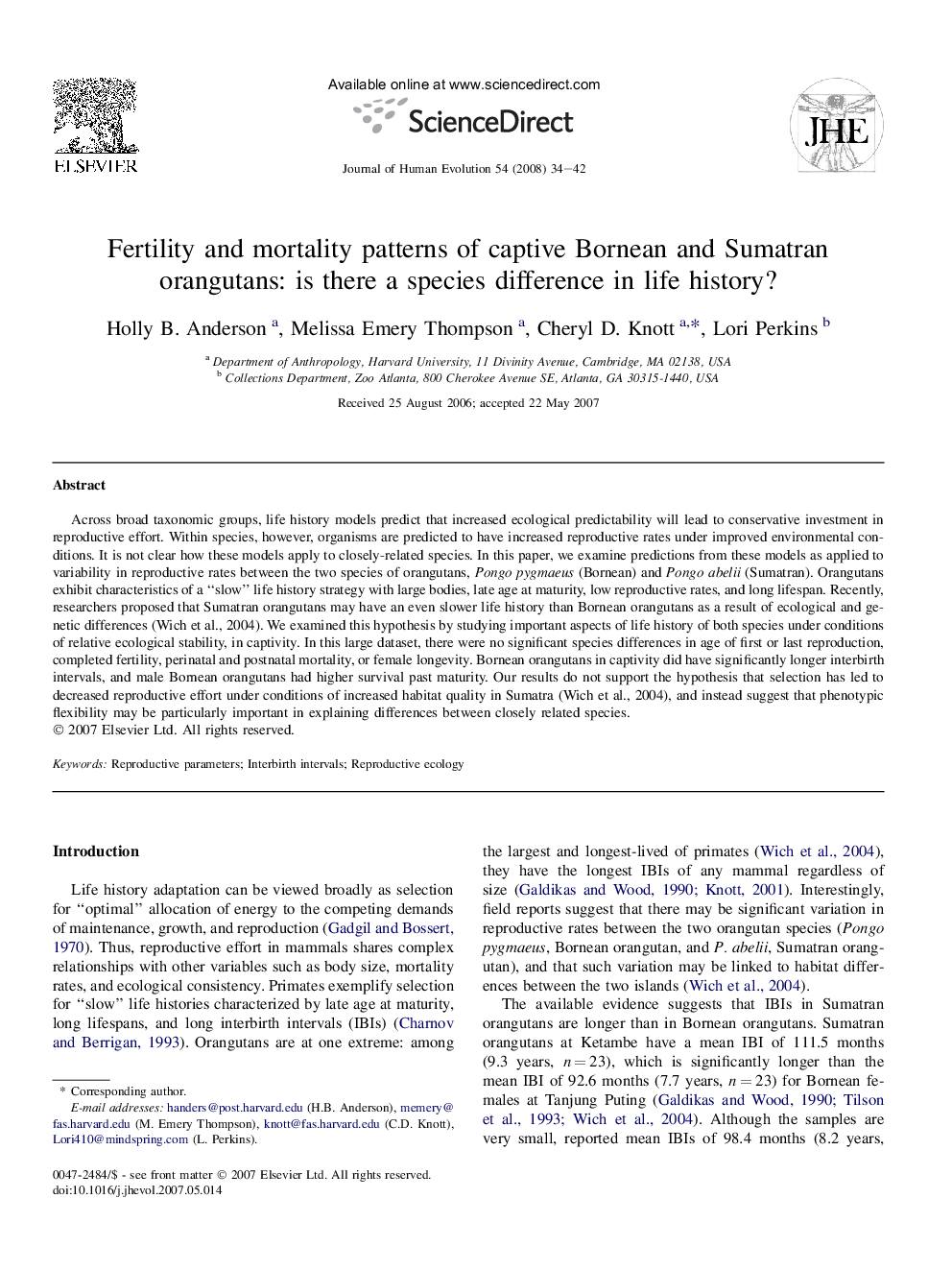| کد مقاله | کد نشریه | سال انتشار | مقاله انگلیسی | نسخه تمام متن |
|---|---|---|---|---|
| 4557140 | 1329529 | 2008 | 9 صفحه PDF | دانلود رایگان |

Across broad taxonomic groups, life history models predict that increased ecological predictability will lead to conservative investment in reproductive effort. Within species, however, organisms are predicted to have increased reproductive rates under improved environmental conditions. It is not clear how these models apply to closely-related species. In this paper, we examine predictions from these models as applied to variability in reproductive rates between the two species of orangutans, Pongo pygmaeus (Bornean) and Pongo abelii (Sumatran). Orangutans exhibit characteristics of a “slow” life history strategy with large bodies, late age at maturity, low reproductive rates, and long lifespan. Recently, researchers proposed that Sumatran orangutans may have an even slower life history than Bornean orangutans as a result of ecological and genetic differences (Wich et al., 2004). We examined this hypothesis by studying important aspects of life history of both species under conditions of relative ecological stability, in captivity. In this large dataset, there were no significant species differences in age of first or last reproduction, completed fertility, perinatal and postnatal mortality, or female longevity. Bornean orangutans in captivity did have significantly longer interbirth intervals, and male Bornean orangutans had higher survival past maturity. Our results do not support the hypothesis that selection has led to decreased reproductive effort under conditions of increased habitat quality in Sumatra (Wich et al., 2004), and instead suggest that phenotypic flexibility may be particularly important in explaining differences between closely related species.
Journal: Journal of Human Evolution - Volume 54, Issue 1, January 2008, Pages 34–42